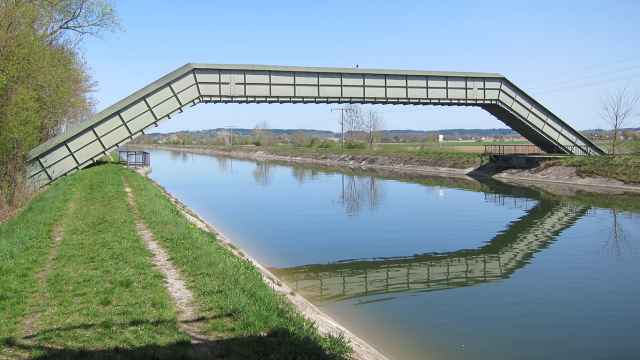A managerial revolution is underway at the Polytechnic Museum, the modernization of which is now Rusnano’s responsibility.
The team of the new director, who calls himself a crisis manager, will have to both pull the institution out of crisis and transform it into a modern museum of science and technology. This demands methods unusual for a typical Russian museum.
The museum had not changed for decades, until it caught the attention of Rusnano head Anatoly Chubais. In 2009, the state corporation set up a non-commercial development fund for the museum. The Polytechnic Museum is “a terrific story that no Silicon Valley could even dream of,” Chubais said in an interview. In August 2010, the museum got a new general director — 69-year-old professor Boris Saltykov, who was science and technology minister from 1991 to 1996. By the time he was appointed, the museum had accumulated too many problems. “It is stuck in the '80s,” Saltykov said in an interview with Vedomosti.
“There is no interactivity to the museum displays, no new technologies, there is no marketing or other key departments, which are what maintain the brand image of the world’s famous museums,” said Alexei Lebedev, head of the museum design lab of the Russian Institute of Cultural Science.
Attendance figures are not impressive either: just over 400,000 visitors per year. “Large museums in downtown Moscow usually get more than 1 million,” Lebedev said.
In 2008, according to The Art Newspaper, the Moscow Kremlin received 1.73 million visitors, the Tretyakov Gallery — 1.39 million, the Pushkin Museum — 1.1 million (the museum's statistic), and St. Petersburg's Hermitage — 2.36 million.
About 80 percent of all traffic through the Polytechnic Museum is guided tours for schoolchildren, but the modernizers want to attract more “retail” visitors — families with children. The museum is in disrepair, to put it mildly. It has had not been renovated for 50 years. Only 13 percent of the extensive collection is on exhibit.
In September, state money materialized as a result of Rusnano’s lobbying. The government decided to allocate 7.2 billion rubles to modernize the museum. This should run out in 2016. The museum is scheduled to close, either entirely or partially, in 2013 for about two years. Also under discussion is the issue of building another, more modern museum building. The reforms are also unusual in that a team of consultants is working on developing a modernization strategy. Ernst & Young is creating a management model, while the British company Event Communications, which took part in modernizing the Science Museum in Glasgow, is designing the project. According to the consultants, the world’s 11 best technology museums differ from the Polytechnic in three important ways. For starters, they have audiences of all ages; they are not just interesting for children. These museums educate and entertain through interactive communication, even through games. The supermodern Deutsche Museum in Munich has a hall showing the anatomy of the human body, where visitors walk around inside the body, along artery corridors, seeing how organs function. And finally, these museums are not only a monument to past accomplishments but are aimed at the future, demonstrating the latest achievements of science and technology.
Concerning his new position, Saltykov said, "I saw this as a challenge and a huge responsibility." He immediately made personnel changes, sacking Lydia Kozhin, deputy director for science, and several people responsible for the work of lecturers. Saltykov says the previous level of activities was not acceptable.
The lecture department is now run by Ivan Bogdanets, who graduated from the London School of Economics, majoring in history and the philosophy of science." According to him, the lecture department staff used to number about 40 people, but will reduced to seven or 10. And the principles of the lectures have changed. They've stopped doing lengthy courses and are making a bet on colorful figures as lecturers — famous scientists, businessmen and public figures.
The structure of the lecture program will now be 60 percent on natural-science topics: for example, about the creation of microprocessors, conducted jointly with Intel; cell biology; and studies of the brain. Another 30 percent of the topics will be in the sphere of social sciences, and another 10 percent will pertain to socio-political themes. In one example, professor Sergei Guriev will conduct a lecture called "Economics: Simple to Complex." A partnership with Polit.ru will address political topics.
On Nov. 23 there will be a debate on the future of journalism, with Leonid Parfenov and Matthias Mueller von Blumenkorn, chief editor of the German magazine Der Spiegel.A Message from The Moscow Times:
Dear readers,
We are facing unprecedented challenges. Russia's Prosecutor General's Office has designated The Moscow Times as an "undesirable" organization, criminalizing our work and putting our staff at risk of prosecution. This follows our earlier unjust labeling as a "foreign agent."
These actions are direct attempts to silence independent journalism in Russia. The authorities claim our work "discredits the decisions of the Russian leadership." We see things differently: we strive to provide accurate, unbiased reporting on Russia.
We, the journalists of The Moscow Times, refuse to be silenced. But to continue our work, we need your help.
Your support, no matter how small, makes a world of difference. If you can, please support us monthly starting from just $2. It's quick to set up, and every contribution makes a significant impact.
By supporting The Moscow Times, you're defending open, independent journalism in the face of repression. Thank you for standing with us.
Remind me later.





